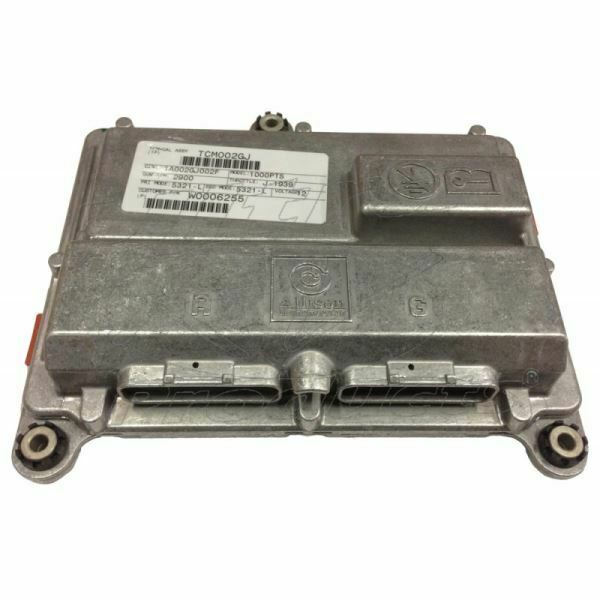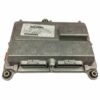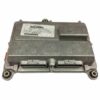Is Your Allison Transmission Acting Up?
If you’re driving a 2001-2005 GMC Sierra or Chevrolet Silverado HD, you know the Allison 1000 transmission is a legendary workhorse. But when the electronic brain behind it—the Transmission Control Module (TCM)—starts to fail, it can turn your reliable truck into a source of frustration. Symptoms like harsh, erratic shifting, getting stuck in one gear (often called “limp mode”), or an illuminated Check Engine Light are common indicators that your TCM has reached the end of its service life. Don’t let a faulty module sideline your truck. This direct-fit replacement TCM is the definitive solution to restore your transmission’s performance and get you back on the road with confidence.
From the Diagnostic Bay
We had a 2004 Silverado 2500HD come in with a classic complaint: “It shifts hard sometimes, and yesterday it wouldn’t shift out of 3rd gear.” The driver had to pull over, shut the truck off, and restart it to get it working again. We scanned it and found a U0101 code—Lost Communication with TCM. After checking the main connector at the module for corrosion and verifying power and ground were solid, we knew the issue was internal to the module itself. These early Allison TCMs, mounted on the fan shroud, are subject to intense heat and vibration, which eventually takes a toll on the internal electronics. We installed one of our pre-programmed modules, performed a simple transmission adaptive pressure relearn, and the truck was shifting like it just rolled off the assembly line. The customer was thrilled to avoid a costly trip to the dealership.
Diagnosing Your 2001-2005 Sierra 2500 TCM Failure
A failing TCM can manifest in several ways, often starting as an intermittent problem before becoming a constant issue. If you’re experiencing any of the following symptoms, a faulty transmission computer is the most likely culprit. This module is a critical component, translating signals from the engine and driver into precise hydraulic commands within the transmission. When it fails, the communication breaks down, leading to poor drivability.
Common Symptoms of a Bad TCM
- ✔ Harsh or Delayed Shifting: The transmission may slam into gear or hesitate significantly between shifts.
- ✔ Stuck in Gear / Limp Mode: The transmission defaults to a single gear (usually 3rd) to prevent further damage, severely limiting vehicle speed.
- ✔ Check Engine Light or Transmission Warning Light: Often accompanied by diagnostic trouble codes (DTCs) such as P0700 (Transmission Control System Malfunction) or U0101 (Lost Communication With TCM).
- ✔ No Communication with Scan Tool: You may be unable to communicate with the TCM using a diagnostic scanner, a clear sign of module failure.
- ✔ Incorrect Gear Indicator Display: The gear selector display on your dashboard may not match the actual gear the truck is in.
- ✔ Random Downshifting or Upshifting: The transmission may shift gears unexpectedly while driving.
The Plug-and-Play Solution: VIN-Programmed for Your Truck
What sets this module apart is our professional programming service. A TCM is not a one-size-fits-all part; it must be specifically calibrated to your truck’s Vehicle Identification Number (VIN). This ensures it has the correct shift points, torque converter lockup strategy, and communication protocols for your exact configuration. When you purchase from us, you simply provide your VIN, and we handle the rest. We flash the module with the latest, most stable GM-approved software before it ships. This means no expensive trips to the dealer for programming. The part arrives at your door ready for installation. This is the most efficient and cost-effective way to properly replace your failing 2001-2005 Sierra 2500 TCM.
Installation and Fitment
This TCM is a direct replacement for the original unit on the following vehicles equipped with the 5-speed Allison 1000 automatic transmission (RPO code M74):
- 2001-2005 Chevrolet Silverado 2500 HD & 3500
- 2001-2005 GMC Sierra 2500 HD & 3500
The module is typically located on the driver’s side of the radiator fan shroud. Installation is straightforward: disconnect the battery, unplug the electrical connectors, unbolt the old module, and bolt the new one in its place. After installation, a transmission adaptive learn procedure is recommended to ensure the smoothest possible shifting.
Compatible Part & Service Numbers:
This unit replaces a wide range of original part numbers, ensuring broad compatibility. Please verify your original part number against this list: 15768288, 15071240, 15163072, 15163073, 15169833, 15169834, 15169835, 15183963, 15187103, 15187104, 29537441, 09385220, 09387820.
Don’t settle for unpredictable transmission performance. Restore the crisp, reliable shifting your truck was built for with this professionally programmed 2001-2005 Sierra 2500 TCM.
Frequently Asked Questions
Do I need to have this module programmed?
No. We program the module to your vehicle’s specific VIN before we ship it to you. It arrives ready to be installed, saving you the time, cost, and hassle of a trip to the dealership.
Where is the TCM located on my 2003 Silverado 2500HD?
On 2001-2005 GM HD trucks with the Allison transmission, the TCM is mounted directly to the driver’s side of the radiator fan shroud in the engine bay. It’s a silver metal box with two large electrical connectors.
What is “limp mode”?
Limp mode is a protective feature where the transmission locks itself into a single gear (usually 3rd) to prevent further damage when a critical fault is detected. This allows you to “limp” the vehicle to a safe location for repair but severely restricts performance.
Will this fix a P0700 trouble code?
A P0700 code is a generic code that simply means the TCM has detected a fault and has requested the Check Engine Light to be turned on. To know the real problem, you need to read the specific codes stored within the TCM itself. If those codes point to an internal module failure or communication error (like U0101), then this replacement TCM is the correct fix.
Is this a simple plug-and-play installation?
Yes, because we program it beforehand, the physical installation is plug-and-play. You simply unbolt the old unit and install the new one. However, for optimal performance and longevity, we highly recommend that a transmission “fast learn” or adaptive pressure relearn procedure be performed with a compatible scan tool after installation.


